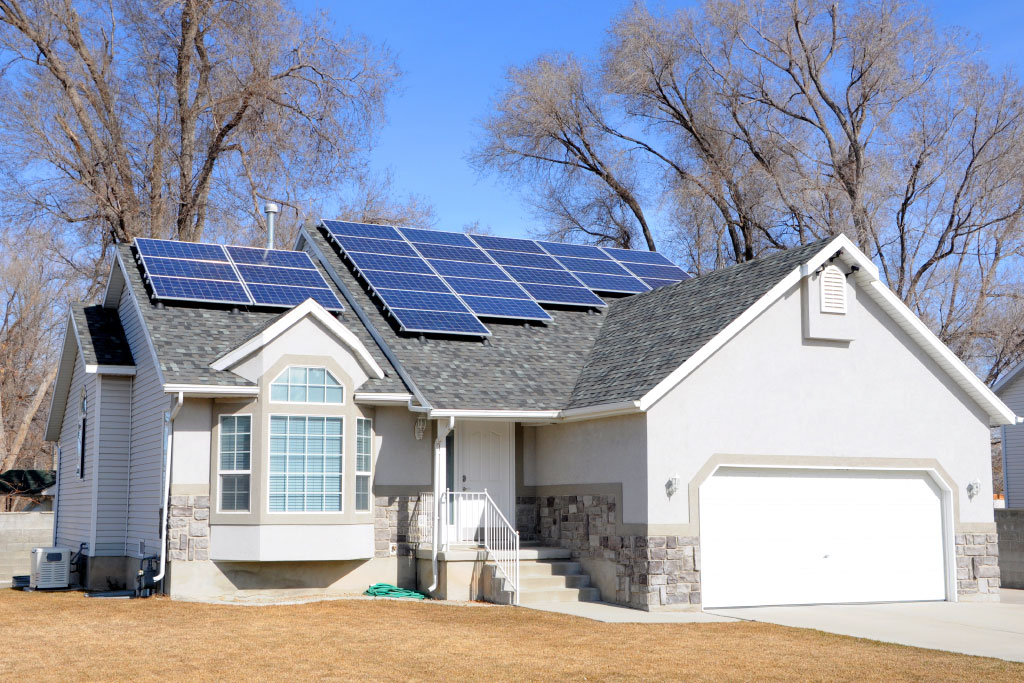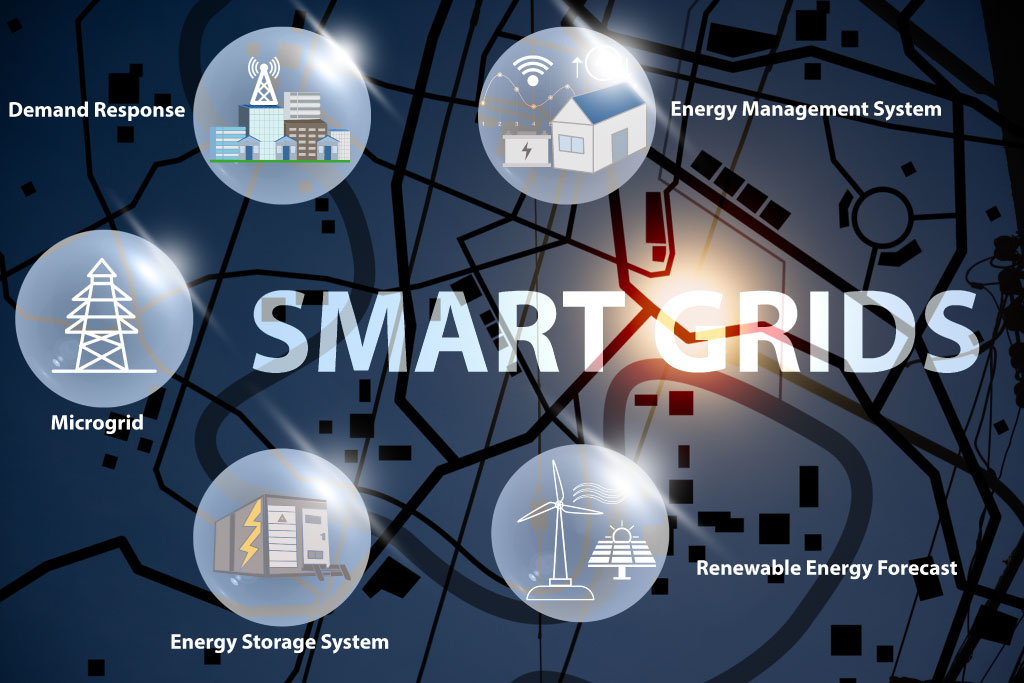In fall 2024, a major Category 4 hurricane swept through the southeast coast of the United States. Hurricane Helene was the deadliest Atlantic hurricane to strike the United States mainland since Katrine.
It ripped through North Carolina, flooding streets, downing power lines, causing mudslides and much worse. Hurricane Helen devastated the region’s electrical infrastructure. Even after it passed, the aftermath hampered Duke Energy’s efforts to restore power. When the monster of a storm finally dissipated on September 29th, North Carolina was left without power for over 10 days!
Except for a small town called Hot Springs, North Carolina. According to the census, this tiny town has a population of just over 500. Yet they got power for essential services on October 2nd. The majority of North Carolina did not receive power until October 8th.
But how? Why did this little town get power back before anyone else? Because they had a solar microgrid.
Rewind back to February 2023. Duke Energy activated the Hot Spring, NC, solar microgrid as a proof of concept. The 2 Megawatt (MW) solar array could power 100% of the town’s peak load. Included in the microgrid was a 4.4 MW lithium-ion battery energy storage system, which can provide up to six hours of backup power.
Originally, it was just an experiment for Duke Energy. As one of the best Solar companies in Virginia, we’re always interested in new, innovative ways of utilizing solar. However, this little experiment might well have saved lives during the aftermath of Hurricane Helene.
Hot Springs still lost power when Hurricane Helene ravaged North Carolina on Friday, September 27, 2024. By Monday, September 30th, the Department of Transportation said it was safe for Duke Energy to cross the French Broad River Bridge to get to Hot Springs. The electricians assessed the microgrid’s damage and found it to be minimal compared to the rest of the state. So they addressed the issues, and by Wednesday, October 2nd, the solar microgrid restored power to the town’s critical facilities.
Hot Springs’ microgrid powered the town for almost a week! Their community-sized solar power system provided continuous power for 143.5 hours. Eventually, a mobile substation, a self-contained electrical distribution system, reconnected Hot Springs with the larger utility grid.
The story of Hot Springs highlights a unique and often overlooked advantage of solar power as disaster relief.

But First, What is a Microgrid?
A microgrid is a system that can generate, store, and distribute power to a defined area. That’s the key here. A microgrid has to be self-sufficient and confined to a specific area. Microgrids do not have to be solar-powered.
In fact, most data centers run on a microgrid with several diesel engines. A data center is essentially an enormous warehouse of servers. When you upload something to the “cloud,” you’re uploading it to a server within a data center. The average data center consumes between 5 and 10 MW of power. However, they need that power to be continuous. If there’s a power outage, every minute their servers are down, they lose millions of dollars. So most have dozens of gigantic diesel engines, each with its own independent fuel reserves, that can power on at a moment’s notice. They also tend to have large-scale battery storage to bridge the gap.
A solar microgrid is one primarily powered by solar energy. Hot Springs, NC, has a solar farm that spans more than 15 acres.
If you have a grid-tied solar power system with a battery backup system, you essentially have a home-sized microgrid. Grid-tied means you’re connected to the wider grid and can partake in net metering. However, with a battery backup, you can separate from the grid in case of a blackout and run independently. This is called “islanding,” when a microgrid disconnects from the grid to operate on its own.
How else can Solar Provide Disaster Relief?
Let’s return to North Carolina during the immediate aftermath of Hurricane Helene. Barnadsville, North Carolina, is a sprawling rural community isolated from surrounding communities. Due to their isolation, it was very difficult for the residents to access critical services. When the storm passed, residents gathered at the fire station and community center so they could help each other.
A nonprofit organization called Footprint Project powered Barnardsville’s community hub with two mobile solar and battery storage trailers. These trailers house all the equipment a solar power system needs: panels, batteries, inverters, cables, and sometimes communication equipment. Their size can range from a pickup truck bed to a 20-foot-long shipping container!
These trailers can easily and quickly deploy modular solar panel arrays. A trailer can roll up to a devastated area and become operational within just a few hours. In Barnadsville, Footprint Project powered medical clinics, provided clean water, and reconnected the community to the internet with a Starlink receiver.
Once Barnardsville reconnected with the grid, Footprint Project continued to help nearby communities.

Are Microgrids the Future of Grid Resilience?
We certainly think so, and Duke Energy does too. The story of Hot Springs’ solar microgrid prompted Duke Energy to build more microgrids in North Carolina. They aim to target rural communities with aging infrastructure and a history of prolonged outages.
Power outages in the United States are becoming more frequent. According to data from Climate Central, the number of weather-related major power outages doubled over the last decade (2014 – 2023) compared to the previous decade. A major outage is one that affects at least 50,000 utility customers (homes or businesses).
In many cases, these outages are lasting longer. According to data gathered by Construction Physics from PowerOutage.us, the average utility customer experienced 410 minutes without power in 2023. That’s spread out over the course of an entire year. However, in 2024, that number jumped to 647 minutes. That’s an increase of over 50%!
Rural areas are more susceptible to these prolonged outages for two major reasons. Firstly, their infrastructure is more spread out, making it more vulnerable. Secondly, rural communities tend to receive less investment from utility companies compared to dense urban areas.
Most of these outages were caused by extreme weather and climate change. From 2000 to 2023, 80% of all major power outages were caused by weather events. However, our aging infrastructure makes us more vulnerable to these climate events. Most of the US power grid was built in the mid-20th century. So it is due for an upgrade, but that would require significant investments. Microgrids can help with that by decentralizing the power grid so it is more manageable.
How can Clean Energy Microgrids Help?
As we learned from Hot Springs, microgrids help vulnerable, underserved communities become more resilient to disasters. It also empowers them with energy independence. Clean energy microgrids give communities more control over their energy production and management. So they are less dependent on centralized utilities and volatile energy markets.
Microgrids are also a good, cost-saving investment for communities. Just as you save on your electrical bill with a solar system, so do entire towns. Communities can save up to 60% of their energy costs with solar microgrids. Their operational costs are typically 40% lower than the fossil fuel alternatives. In our last blog, we discussed calculating the payback period and return on investment for your solar project. (Cost-benefit Analysis of Solar, how to calculate your ROI & payback period.) Larger-scale projects can shorten the payback period. For solar microgrids, the payback period is often just 3-5 years.
So solar microgrids are cheaper to run, quicker to pay for themselves, and more affordable for the community.
They also reduce our dependency on fossil fuels. If you’re interested in solar, then you’re probably conscious of your carbon footprint. You want to leave behind a healthier, cleaner, and greener world. However, reducing fossil fuel usage carries immediate benefits as well.
Since 2022, Ukraine has been engulfed in the Russia-Ukraine war, destorying vital infrastructure. During wartime, civilians and military forces are dependent on supply lines, which are prime targets. Thankfully, Ukraine is utilizing portable solar microgrids to power medical clinics and field hospitals. Solar microgrids provide stability and security, especially when they can’t always access fuel.
There’s even hope for those diesel-guzzling data centers. They need consistent, continuous power all day, every day. Wind and Solar are reliant on the weather, so they’re not ideal. Hydropower could work, but then data centers would have to be constructed near a dam, which isn’t always an option.
So major tech companies like Microsoft, Amazon, Google, and Meta are investing in nuclear energy to power their data centers. Of course, people often freeze up at the mention of nuclear energy. And for good reason, memories of nuclear disasters are still fresh in our history. However, nuclear technology has advanced tremendously in terms of safety and reliability. If it helps reduce fossil fuels, why not invest in it?

Microgrids offer Communities an Opportunity to Reimagine their Infrastructure, Economy, and Disaster Readiness.
Microgrids are an exciting avenue for solar energy. However, you’re best bet for the immediate future might be a residential solar power system. So, talk to your local solar Company in Virginia Beach and schedule a free site assessment. We’ll evaluate your electrical bill and develop a system that’s right for you.
Your future looks bright with solar energy!
